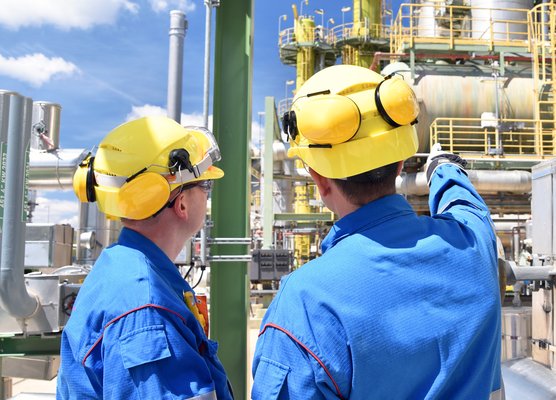In many cold and freezing environments, insulation is not enough to protect pipe systems from freezing. However, facilities that aren’t regularly in subzero environments are at risk for freezing weather at some point in the year. Burst or leaking pipes in an industrial environment can lead to costly damage and costly interruptions in operations. That is where a pipe freeze protection system comes into play.
In this post we discuss what a pipe freeze protection system is and how it protects your industrial facility in winter.
What is a Pipe Freeze Protection System?
Temperatures can easily drop below freezing overnight and put your processes in jeopardy. If your pipes are not heat traced and insulated properly, this can be a problem.
A pipe freeze protection system is made up of three distinct parts that work together to ensure freeze protection.
- Heat tracing cable: This cable is installed along the insulated pipe to prevent the liquid inside from freezing.
- Controller: When the ambient temperature drops below the set point, the controller will switch the system on and allow fluid to move freely through the pipe. When the temperature is above the set point, the system will remain off.
- Sensor: The sensor monitors the ambient temperature to signal whether the controller should turn on or off.
For optimal results, all heat tracing piping should be properly insulated.
What Technology Powers Pipe Freeze Protection?
There are various technologies that can create a pipe freeze protection system, but the most common for industrial applications are:
- Self-Regulating: In this system, the cable will automatically become hotter or cooler all along its length based on the ambient temperature.
- Power-limiting: This technology works best in systems that are exposed to high temperatures and require high power output at high temperatures.
- Mineral insulated (MI): Best suited for environments that are exposed to high temperatures or corrosive environments. MI construction consists of conductors embedded in a magnesium oxide insulation surrounded by a seamless metal sheath. This makes MI cables very rugged.
- Constant wattage: Constant wattage cables always provide the same heat output when powered, regardless of safety considerations or heat demand.
A complete heat trace system can be configured for most industrial environments, including those that hazardous or difficult to install.
The Benefits of a Self-Regulating Heat Trace System
While the goal of a pipe freeze protection system is to prevent frozen and damaged pipes, there are additional benefits provided by self-regulating pipe freeze protection systems that should be considered.
- Easy to use: Self-regulating cables can be cut to length on site, making for easy application and easy maintenance.
- Safe: Heat trace cables can be spaced narrowly and even overlapped multiple times, without danger of overheating. This makes them extremely easy to install and lowers risk of anything going wrong after installation.
- Energy-efficient: Self-regulating cables automatically adjust heat output to compensate for ambient temperature changes, meaning that heat is only produced when and where it’s necessary. This means your system will use less energy when less heat is needed.
Did you know that over 1.75 million feet of nVent RAYCHEM self-regulating heating cable has been sold globally? You will find nVent RAYCHEM heat tracing systems in some of the most complex industrial facilities around the world.
If you are considering installing or updating a pipe freeze protection system, we are ready to help.
Let us be your partner for this year’s winter preparation and maintenance. Learn more about how we are setting the standard in heat tracing and connect with one of our MRO experts today.



